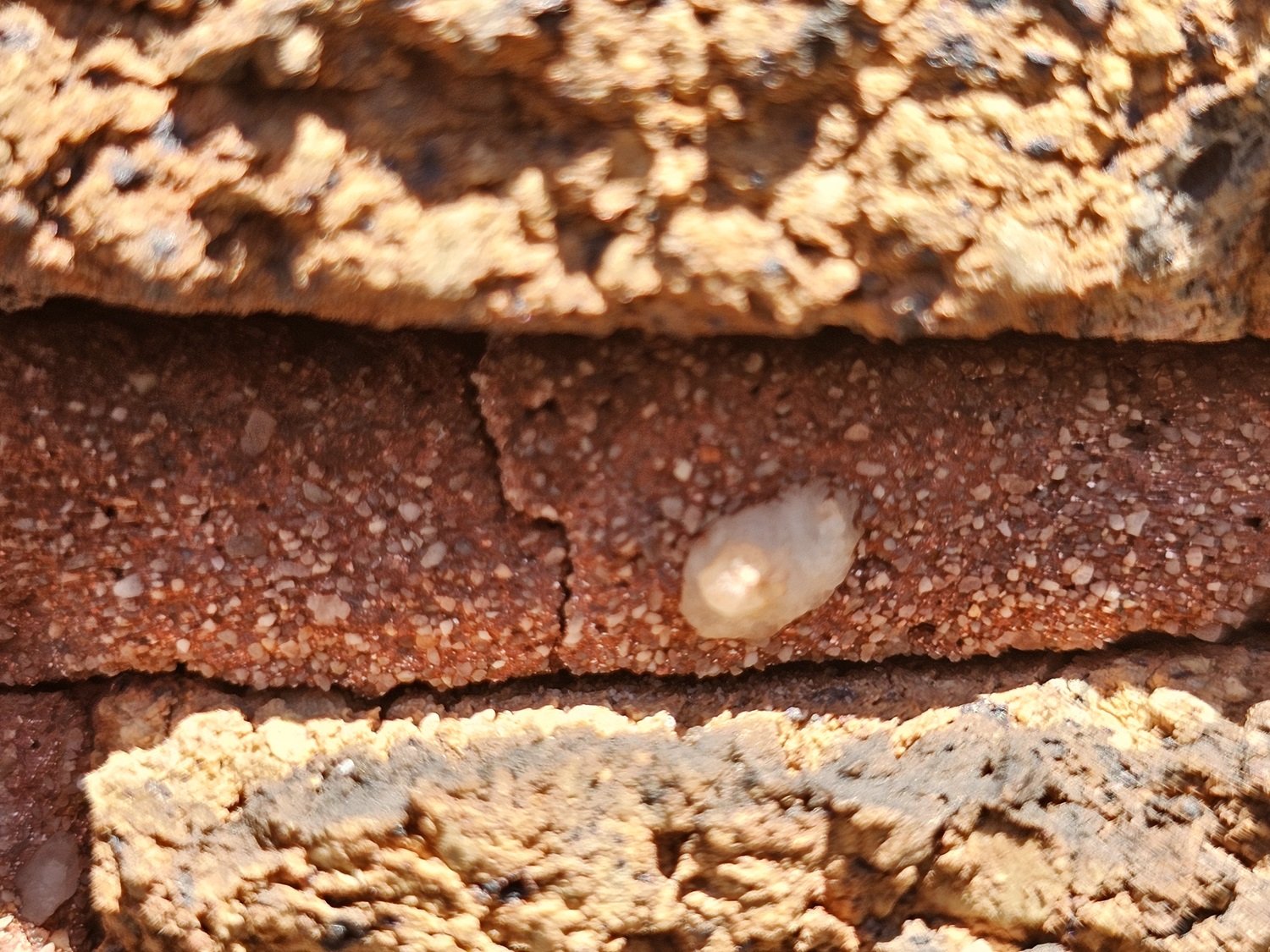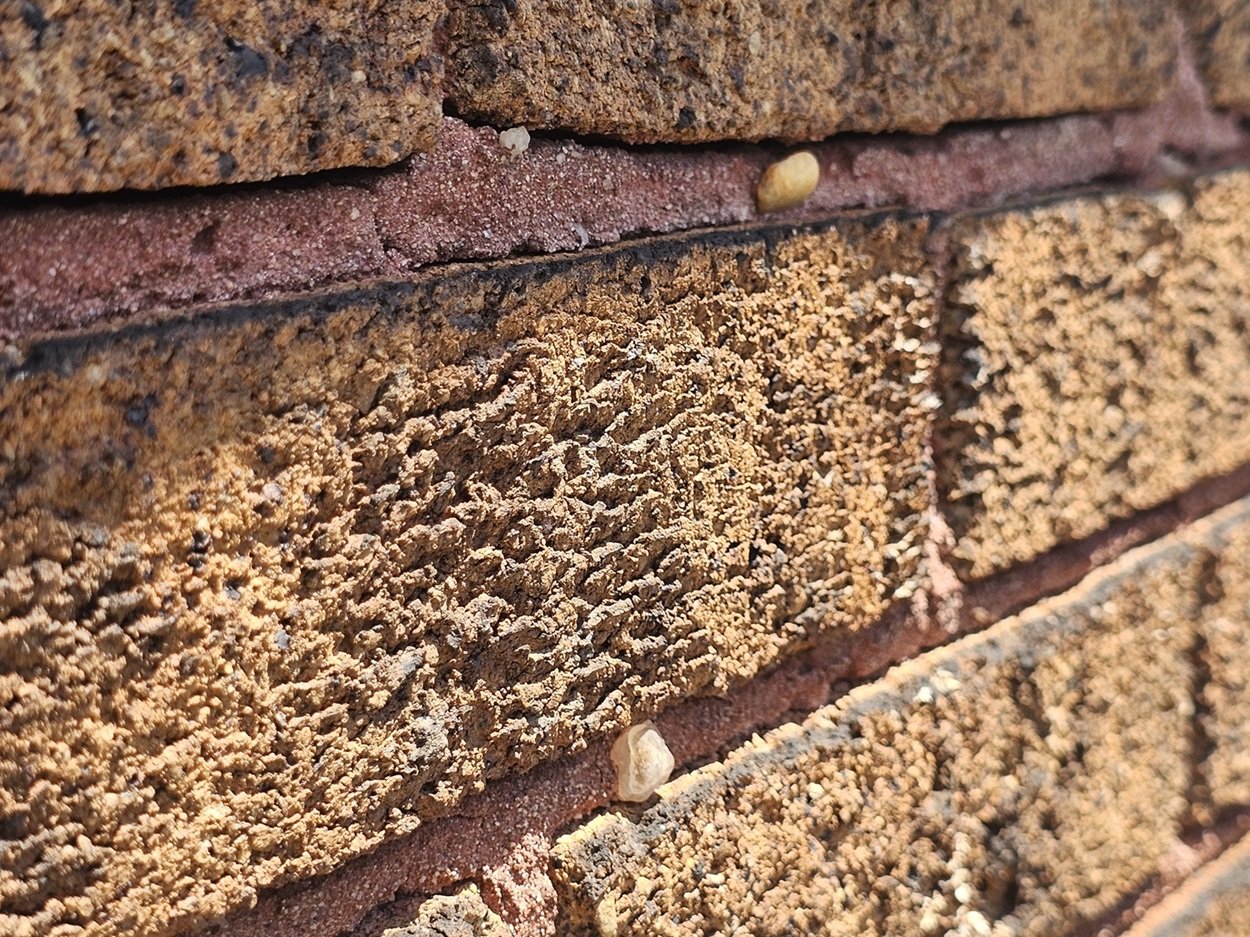Last week we took a look at a building with iron spot bricks.
The appearance of iron spots can vary widely depending on several factors:
- Clay Composition: The amount and type of iron compounds in the clay significantly influence the frequency and size of the spots.
- Firing Temperature: Higher firing temperatures tend to produce more pronounced and larger iron spots.
- Kiln Atmosphere: The presence or absence of oxygen in the kiln during firing can affect the color and appearance of the spots.
- Cooling Rate: The speed at which the bricks cool after firing can influence the final appearance of the iron spots.
In Washington DC’s third wave of construction (1910-1940s), Ironspot and tapestry bricks became particularly popular for several reasons:
- Aesthetic Appeal: The unique, variegated appearance of Ironspot bricks added visual interest to building facades, aligning with the architectural trends of the time.
- Durability: Ironspot bricks were often fired at higher temperatures, resulting in a denser, more durable product.
- Color Variation: The iron spots provided natural color variation, allowing architects and builders to create more dynamic and textured facades without the need for multiple brick types.
- Association with Quality: The production of ironspot bricks was often associated with higher-quality manufacturing processes, making them a desirable choice for upscale residential and commercial buildings.
The use of ironspot and tapestry bricks in DC during this period coincided with the city’s rapid growth and the development of many of its iconic neighborhoods. Rowhouses and apartment buildings constructed during this time often featured facades made entirely of ironspot bricks or used them as decorative elements in combination with other materials.
It’s important to note that not all iron spots in bricks are intentional or desirable. In some cases, excessive or poorly controlled iron content can lead to defects in the brick, such as spalling or premature deterioration. However, in the case of intentionally produced ironspot bricks, the spots are a valued characteristic that enhances the brick’s aesthetic and historical value.
The preservation of buildings featuring ironspot bricks presents unique challenges. Over time, weathering and pollution can alter the appearance of the iron spots, sometimes leading to discoloration or staining. Conservation efforts often focus on cleaning methods that preserve the unique surface characteristics of these bricks while addressing issues like atmospheric soiling.
In modern brick production, the creation of ironspot effects is often more controlled and can even be simulated through various manufacturing techniques. Some contemporary brickmakers use specialized glazes or surface treatments to replicate the appearance of historic ironspot bricks, allowing for the continuation of this aesthetic in new construction or restoration projects.
Today, the ironspot bricks found in many of DC’s historic neighborhoods are not from the first or second wave of construction. Generally, these buildings were built in the third wave of construction here in Washington DC.
The formation of iron spots occurs during the firing process of brick manufacturing. As the bricks are heated to extremely high temperatures (typically between 1,800°F and 2,400°F), the iron compounds in the clay undergo chemical changes. At these temperatures, the iron oxides can melt and form small, glassy inclusions within the brick’s surface. As the brick cools, these inclusions solidify, creating the characteristic spots.
We can Help
Our company focuses on historic restoration more than modern building upkeep, maintenance, and construction, but our company understands both types of construction very well and a full picture well-rounded approach is needed in any niche in the construction industry. Although we focus on historic restoration, repointing, tuckpointing and historic brick repair, our company also has technical knowledge and competencies in the areas of modern and contemporary construction as well as we become one of the leaders in that area of the market today. Understanding both historic and modern or contemporary construction is useful because both aspects help understand the challenges and potential solutions for challenges in building science and construction.
We can help with a variety of historic masonry restoration needs and upkeep, from modest tuckpointing and or repointing to complicated and extensive historic masonry restoration. Infinity Design Solutions is a historic restoration specialist contractor specializing in both historic masonry restoration such as tuckpointing our repointing, and brick repair. If you have questions about the architectural details or facade of your historic building in Washington DC, reach out and say hello and if we can help we’ll be glad to assist you. You can email us or call us on the telephone at the following link: contact us here.





